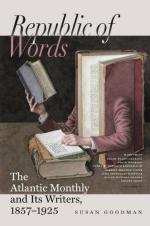All this while, a movement of a most extraordinary character was being carried on, which had commenced before the Governor entered the Valley. The people of the northern settlements, along the base of the Wahsatch Mountains, including Salt Lake City, were deserting their homes, abandoning houses, crops, and their heavier furniture, and migrating southward. Long wagon-trains were sweeping through the city every day, accompanied by hundreds of families, and droves of horses and cattle. A fair estimate of the entire Mormon population of Utah is about forty-five thousand. Of this number, ten thousand is the proportion of the towns north of Salt Lake City, and upward of fifteen thousand that of the city itself and the settlements in its immediate neighborhood. Considerably more than half the people of the Territory, therefore, shared in this emigration. What was its object and what its destination are still mysteries; but it was probably directed toward the mountain-ranges in the southwestern portion of the Great Basin, of the topography of which region—hitherto unvisited by Federal explorers—the Mormons undoubtedly possess accurate information. At any rate, it was initiated and conducted under the direction of the Church, and Young and Kimball were among the first to lead the way. Commencing late in March, it continued until June, and before the beginning of May more than thirty-five thousand people were concentrated on the western shore of Lake Utah, chiefly in the neighborhood of Provo, fifty miles south of Salt Lake City. Such a scene of squalid misery, such a spectacle of want and distress, was never before witnessed in America. More than half this multitude could not be accommodated in the towns, and lodged in board-shanties, wigwams, mud-huts, log-cabins, bowers of willow-branches covered with wagon-sheets, and even in holes dug into the hill-sides. The most common quarters, however, were made by removing a wagon-body from its wheels, placing it upon the ground, and erecting in front of it a bower of cedars. It is needless to dwell on the exasperation which animated all who submitted to these sacrifices. In the history of the Albigenses hunted through Languedoc, or of the Jews writhing under the Spanish Inquisition, a record of similar bitterness of feeling may be found, but its parallel does not exist outside the annals of religious persecution.
Governor Cumming returned to Fort Bridger during the second week in May, still accompanied by Mr. Kane, and also by a party of Mormons who intended to escort the latter to Missouri. Upon his arrival, he addressed a letter to General Johnston, stating, officially, that the people of Utah had acknowledged his authority, and that the roads between the camp and Salt Lake City were free for the transit of mails and passengers, the Mormon forces having withdrawn from the canons, and none of the Territorial militia remaining under arms except with his consent and approbation. A day or two later, Mr. Kane bade him farewell and started toward the States, his mission having been completed.




